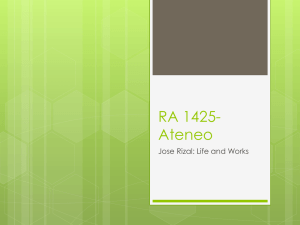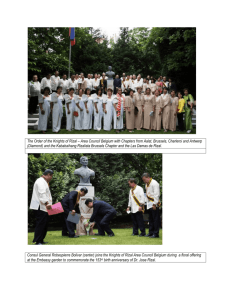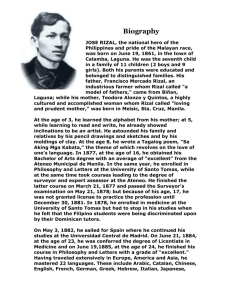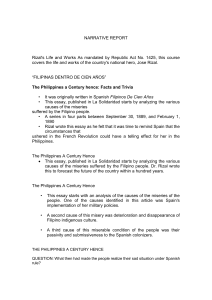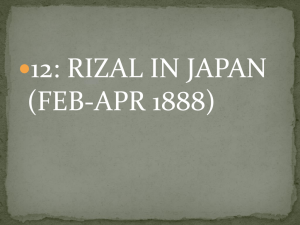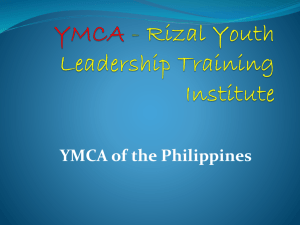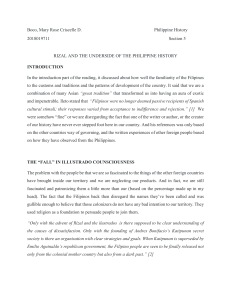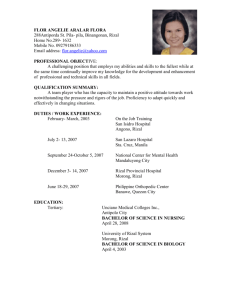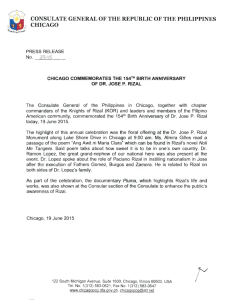Jose Rizal (1861-1896) grew up in the colonial
advertisement
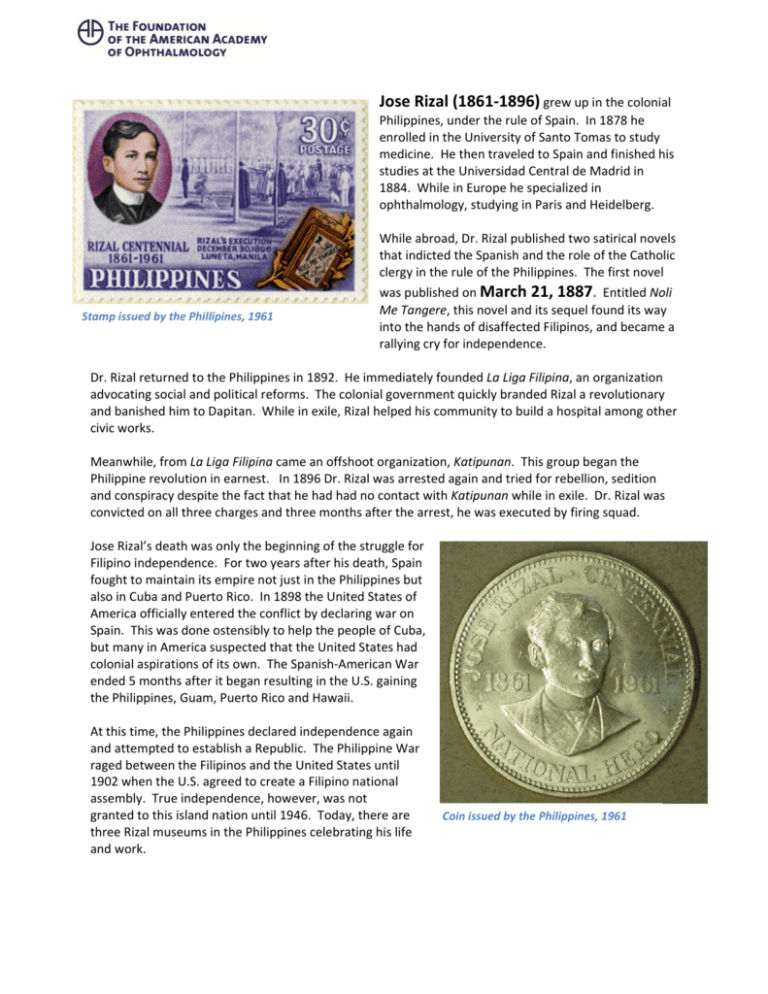
Jose Rizal (1861‐1896) grew up in the colonial Stamp issued by the Phillipines, 1961 Philippines, under the rule of Spain. In 1878 he enrolled in the University of Santo Tomas to study medicine. He then traveled to Spain and finished his studies at the Universidad Central de Madrid in 1884. While in Europe he specialized in ophthalmology, studying in Paris and Heidelberg. While abroad, Dr. Rizal published two satirical novels that indicted the Spanish and the role of the Catholic clergy in the rule of the Philippines. The first novel was published on March 21, 1887. Entitled Noli Me Tangere, this novel and its sequel found its way into the hands of disaffected Filipinos, and became a rallying cry for independence. Dr. Rizal returned to the Philippines in 1892. He immediately founded La Liga Filipina, an organization advocating social and political reforms. The colonial government quickly branded Rizal a revolutionary and banished him to Dapitan. While in exile, Rizal helped his community to build a hospital among other civic works. Meanwhile, from La Liga Filipina came an offshoot organization, Katipunan. This group began the Philippine revolution in earnest. In 1896 Dr. Rizal was arrested again and tried for rebellion, sedition and conspiracy despite the fact that he had had no contact with Katipunan while in exile. Dr. Rizal was convicted on all three charges and three months after the arrest, he was executed by firing squad. Jose Rizal’s death was only the beginning of the struggle for Filipino independence. For two years after his death, Spain fought to maintain its empire not just in the Philippines but also in Cuba and Puerto Rico. In 1898 the United States of America officially entered the conflict by declaring war on Spain. This was done ostensibly to help the people of Cuba, but many in America suspected that the United States had colonial aspirations of its own. The Spanish‐American War ended 5 months after it began resulting in the U.S. gaining the Philippines, Guam, Puerto Rico and Hawaii. At this time, the Philippines declared independence again and attempted to establish a Republic. The Philippine War raged between the Filipinos and the United States until 1902 when the U.S. agreed to create a Filipino national assembly. True independence, however, was not granted to this island nation until 1946. Today, there are Coin issued by the Philippines, 1961 three Rizal museums in the Philippines celebrating his life and work.
